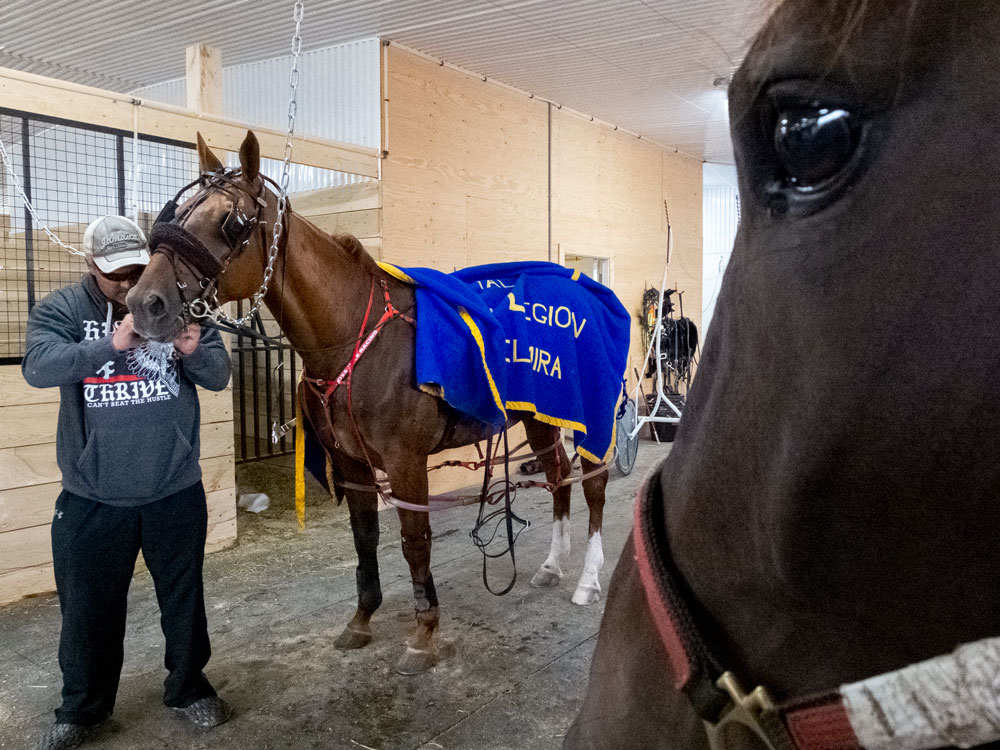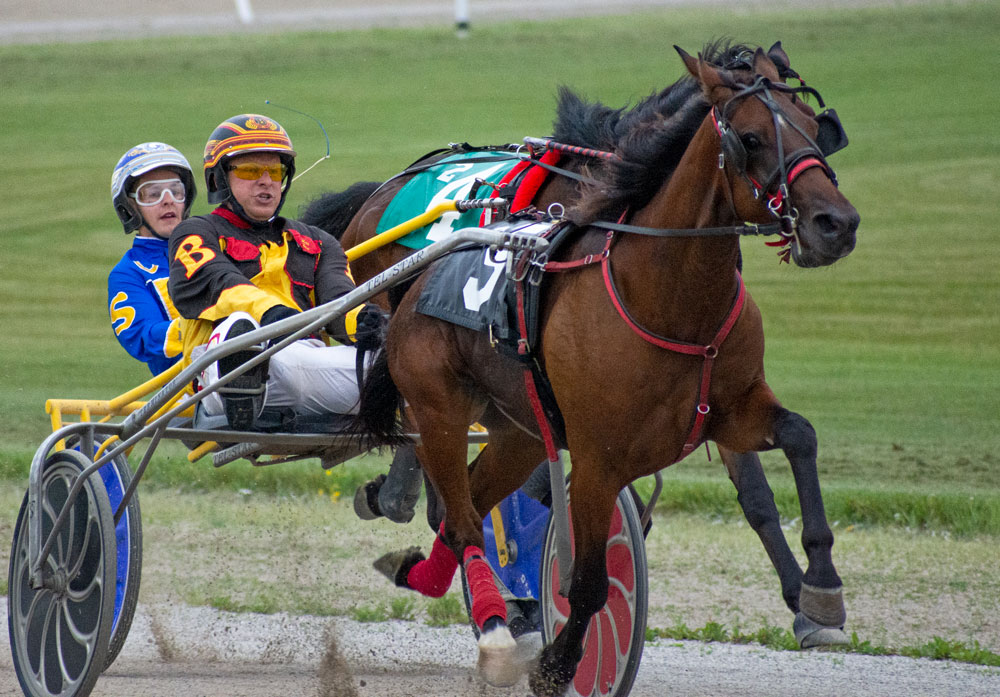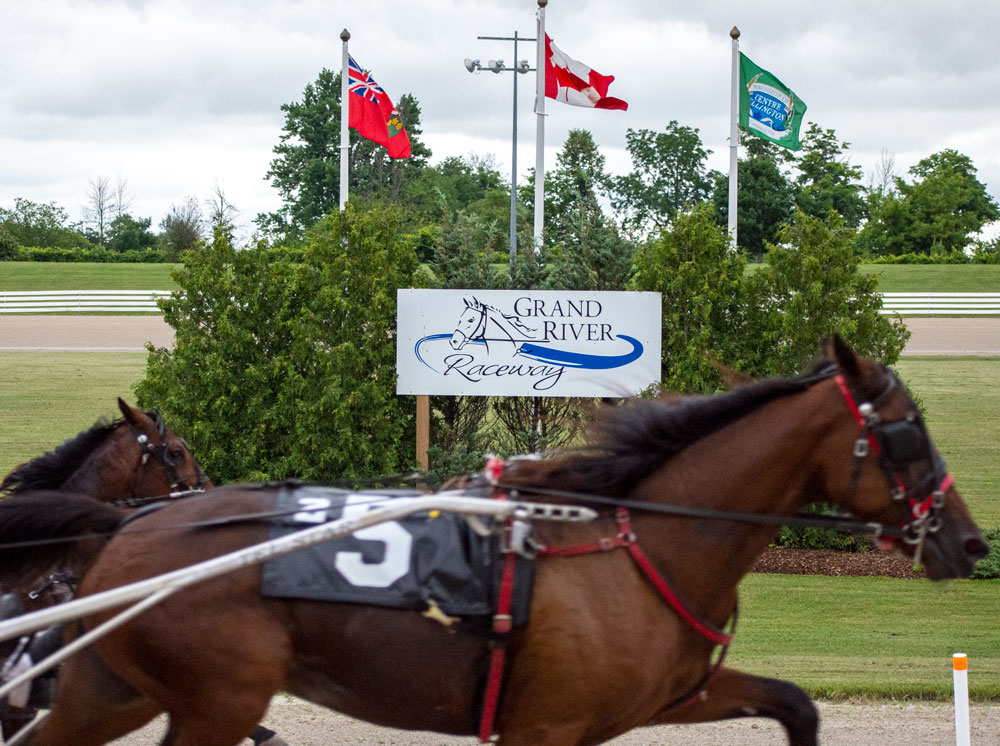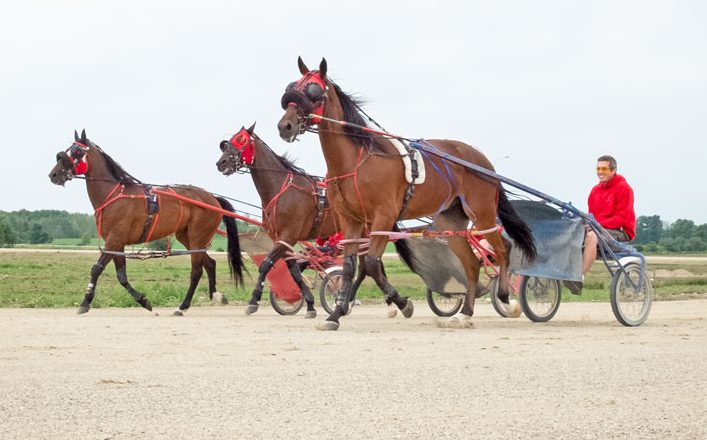WELLINGTON COUNTY – When Standardbred harness driver Bob McClure crossed onto greener pastures south of the border this past April, he was betting on a quick return home to his wife and five-year-old son in Guelph/Eramosa.
What he didn’t know was how wrong he’d be.
When the province effectively closed the gates on Ontario horse racing back in April, harness drivers, owners and trainers sped off to the U.S., where it seemed horse people had developed an antidote to the coronavirus—racing there was going full-tilt.
“Down there I was living out of a hotel every night and rental cars,” McClure told the Advertiser.
“That might be fun for one week [but] you get pretty home sick in a hurry.”
What he believed would be a brief interlude turned into a three-month stay, driving on tracks in Pennsylvania and New Jersey for Quebec-based Determination stable.
“They had no choice, they had to make a move, they had to go down to the States to get horses racing,” McClure said of the multi-million-dollar racing outfit.
Remaining here would be to allow U.S. horse competitors a head start on conditioning.
“They’d spend all summer chasing,” McClure explained.
While Determination races its horses across North America on any given year, its home base remains at Mohawk raceway—that changed this year.
“Unfortunately, like a lot of horses, the big stable, they kept the majority of their best horses down there and that hurts,” McClure said.
Of the 18 horses Determination left with, only eight have returned, according to McClure.
He admits he’s not exactly hurting—he was Canada’s top-winning driver last year with over 1,400 Canadian starts bringing in $6.6 million—but for smaller stables, he wonders about their ability to rebound.
“The expenses never went away for these owners and trainers,” he said, adding some sold off their horses and got out of the game entirely.
“Their livelihood was ripped away from them.” – Bob McClure
Taking a gamble
Visible from trackside, Kyle Bossence has a big smile across his face while jogging a horse around a half-mile loop in Arthur on a recent Saturday morning.
It’s been this way through most of the pandemic.
While some saw U.S. races as an answer to the province’s shutdowns, Bossence decided to stay put.
“The way I looked at it, if I was going to go to the states it was going to have to be a permanent move,” he said, explaining the cost of the move wouldn’t be worth it short-term.
Instead, the Bossence Racing team—three drivers and three groomers—has kept its entire stable of 23 horses in shape with a twice-weekly training regimen, ready for a sudden green light from the province.

Inside the Bossence Racing paddock in Arthur prepping for training. Photo by Jordan Snobelen
The decision not to “turn out” the horses to field cost more but benefited Bossence in the long run.
With horses champing at the bit, the wins soon returned with spectator-free racing permitted in step one of the province’s reopening plan on June 11.
Others, he says, haven’t been so lucky.
“The last [lockdown] there, there was definitely people I know that just shut the doors and said they’re done,” he said.
“The whole sport’s a gamble.” – Kyle Bossence
Getting back on the horse
The most recent lockdown was “the straw that broke the camel’s back” Central Ontario Standardbred Association president Bill O’Donnell said.
“It’s not like locking the door in a store, you still got to feed ‘em, you still got to train them—they’re live animals,” he said.
O’Donnell estimates 2,600 standardbred horses were eligible to race last year, compared to 2,200 this year, pointing toward a possible drop due to industry challenges.
“In the last 15 months, we’ve been shut down like five months,” he said. “It’s been really tough on people.”
Ontario Racing executive director Jonathan Zammit called the lack of racing “devastating” but took an optimistic tone, focusing on the redirection of purse dollars from an industry funding agreement with the Ontario Lottery and Gaming Corporation to horsepeople in the form of equine welfare payments at $1,000 per standardbred horse to help cover costs of care and maintenance.

Standardbred harness racing with spectators started in June at Grand River Raceway. Photo by Jordan Snobelen
“At the end of the day our horse supply is still in really good shape, it’s still very robust and that’s how we judge the health of the industry,” Zammit said.
“I think if we can just keep racing and avoid any future shutdowns our industry is hopefully going to recover.”
President and CEO of Standardbred Canada Dan Gall said there was early concern with the number of drivers and horses aiming for the U.S., but he emphasized it was never “alarm bells.”
“There wasn’t a huge, massive exodus at the time; there was certainly more movement than we would like to see, but what are your options?” he said, adding drivers and trainers just did what they had to do to pay the bills.
Those who did go south, Gall says, have since returned.
“I think the fact that most of all our drivers are back … the opportunity is here, we’ve had a strong few weeks and fans are now back joining the races to some degree,” he said.
Off to the races
This year, Grand River Raceway was limited to training-only in May—a contentious issue throughout the industry—before racing resumed once again without spectators in June, later adding 500 spectators at the end of the month.

Harness racing at Elora’s Grand River Raceway. Photo by Jordan Snobelen
Raceway director of operations Jamie Martin admits he too had concerns about horse supply, believing some wouldn’t come back, but said with “very few exceptions” nearly everyone had returned with horses in tow.
“Horse people are generally pretty determined and love what they do,” he said. “It’s home for them.”
Most recently, the province has permitted 1,500 spectators at the raceway—in time for Ontario Sires Stakes races and the Battle of Waterloo
and Battle of the Belles this weekend.




